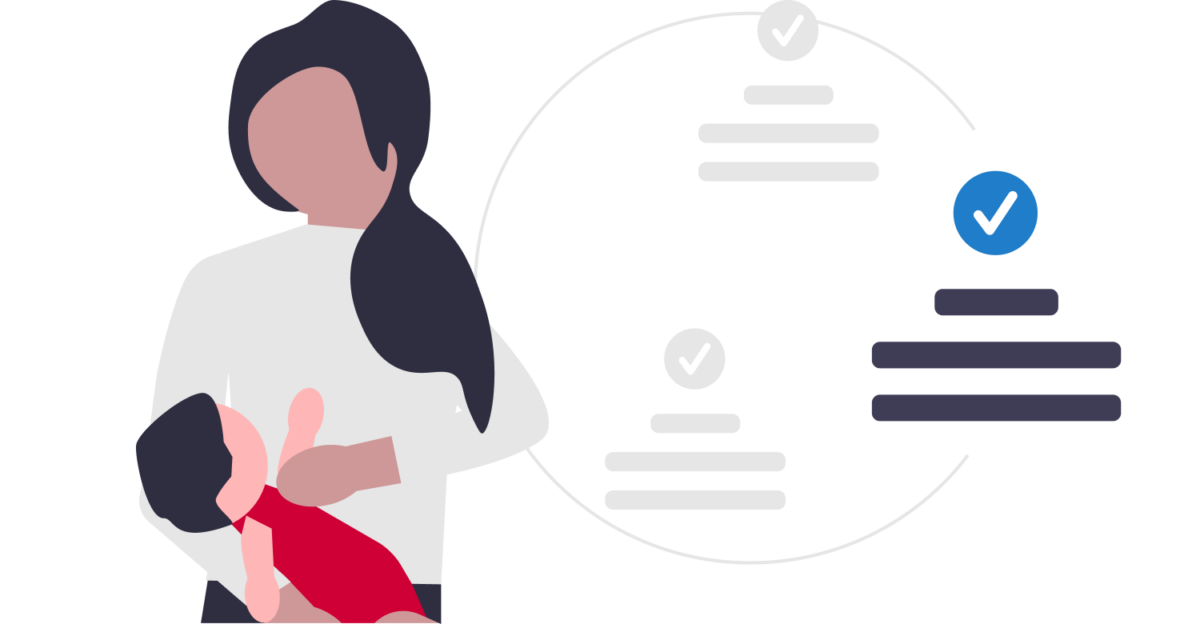Most people have a general idea of how to check a person’s pulse, but that doesn’t always mean they know what to check for — or how to find a pulse on an infant rather than an adult. While an infant pulse check is similar to a pulse check on an adult, there are a few key differences.
Pulse checks are not just for determining whether a person’s heart is beating or if they need CPR; they can also alert you to potential health issues that require medical attention. By learning what a normal infant heart rate feels like, you’ll be much better equipped to detect when something is wrong.
Read on to learn more about infant heart rates compared to an adult’s, and how to do an accurate infant pulse check.
How & Why to Check a Pulse
Regardless of a person’s age, a pulse check helps you determine how fast or slow their heart rate is, measured in beats per minute. A heart rate that is either too fast or too slow can indicate a problem that requires medical attention, and a person with a heart rate that is dangerously slow or nonexistent needs CPR immediately.
To check a person’s pulse, always use two fingers that are not your thumb. This will help prevent a false reading, since the thumb has its own pulse. To determine a person’s heart rate, count the number of pulses you feel in 30 seconds, then double that number for the total number of beats per minute.
While the purpose and method for an infant pulse check are similar to checking a pulse on an adult, there are two main differences: where to check for the pulse and what heart rate to check for.
Where to Check the Pulse on an Infant
There are several pulse points on the human body. These are places where the arteries are close to the skin and it is easier to feel the pulse as blood is pumped from the heart throughout the person’s body.

For an adult or child, the best place for a pulse check is the carotid artery, located in the neck. However, infants don’t have much of a neck yet, so it can be difficult to find their carotid artery.
Instead, the best place for an infant pulse check is the brachial artery, located on the inner upper arm between the bicep and tricep. Place two fingers directly on the infant’s skin over this artery to check for a pulse.
What to Know About Infant Pulse Rates
In some emergency situations, your main concern while performing an infant pulse check will likely be whether the infant has a pulse at all. However, it’s also important to know what a normal pulse rate for an infant feels like, so you can get help if the infant’s pulse is either too fast or too slow.
In general, infants have a faster heart rate than adults. While a normal resting heart rate for an adult is usually between 60-100 beats per minute, an infant’s resting heart rate is typically between 80-160 beats per minute.
Some variation from these average rates does not necessarily mean there is a life-threatening problem. However, it’s always best to consult a medical professional if you notice that your infant’s pulse is much faster or slower than usual, especially if they have other symptoms of respiratory issues or if the pulse seems irregular in any way.
Infant Pulse Check: An Essential Skill
Checking for a pulse on an infant is a little different from checking for an adult’s pulse, but it’s just as essential to know how to do. By learning how to do an infant pulse check — and what pulse rates to check for — you will be better prepared to respond quickly when an emergency occurs.
At ProTrainings, we believe that anyone can learn to save lives in an emergency. For more CPR and first aid tips and best practices, follow us on LinkedIn.
